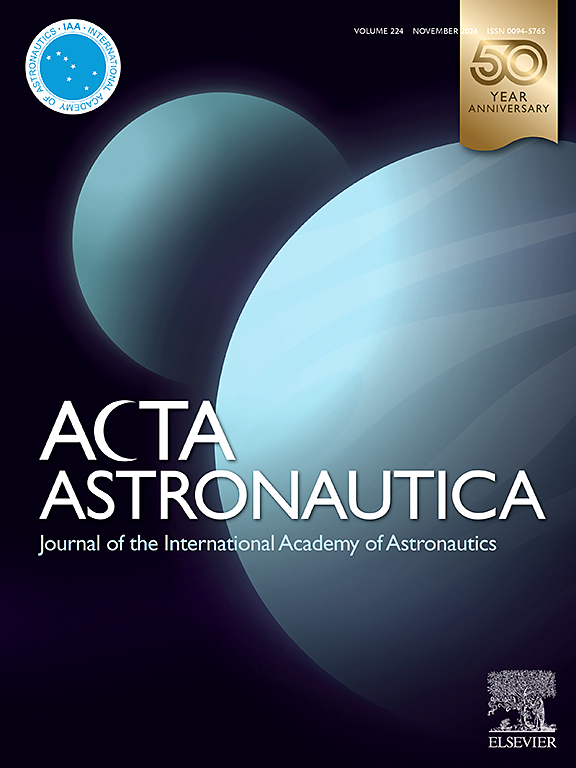Emission spectroscopy and surface temperature analysis from Hayabusa2 sample return observation
IF 3.1
2区 物理与天体物理
Q1 ENGINEERING, AEROSPACE
引用次数: 0
Abstract
Remote observation is an important way for studying the re-entry environment that a spacecraft experiences. On 5 December 2020 UTC, researchers from the University of Queensland (UQ) took part in the flight observation of the Hayabusa2 Sample Return Capsule’s re-entry, conducting independent measurements alongside other research teams. The UQ system, which included a tracking camera and two grating prism spectrometers, was designed to capture atomic transitions of nitrogen, oxygen, and hydrogen, as well as blackbody radiation, in the visible and near-infrared regions. Spectra were recorded from 17:28:56 to 17:29:16 UTC, with data from 17:28:56 to 17:29:08 UTC successfully processed and calibrated, covering the peak radiative heating point at 17:29:03 UTC. This paper outlines the data processing and calibration techniques, including methods for extracting spectra in low signal-to-noise ratio images and correcting for spectral blurring across spatial dimension. Calibrated spectra are presented, and surface temperatures were derived by fitting the spectra to Planck’s law. UQ’s data, as an important subset of the broader dataset from the joint observation, showed strong agreement with the results from other teams during the overlapping time frames. The fitted temperature profile also aligned with numerical predictions.求助全文
约1分钟内获得全文
求助全文
来源期刊

Acta Astronautica
工程技术-工程:宇航
CiteScore
7.20
自引率
22.90%
发文量
599
审稿时长
53 days
期刊介绍:
Acta Astronautica is sponsored by the International Academy of Astronautics. Content is based on original contributions in all fields of basic, engineering, life and social space sciences and of space technology related to:
The peaceful scientific exploration of space,
Its exploitation for human welfare and progress,
Conception, design, development and operation of space-borne and Earth-based systems,
In addition to regular issues, the journal publishes selected proceedings of the annual International Astronautical Congress (IAC), transactions of the IAA and special issues on topics of current interest, such as microgravity, space station technology, geostationary orbits, and space economics. Other subject areas include satellite technology, space transportation and communications, space energy, power and propulsion, astrodynamics, extraterrestrial intelligence and Earth observations.
 求助内容:
求助内容: 应助结果提醒方式:
应助结果提醒方式:


